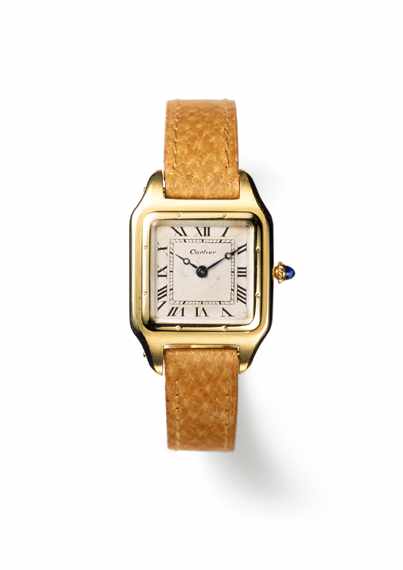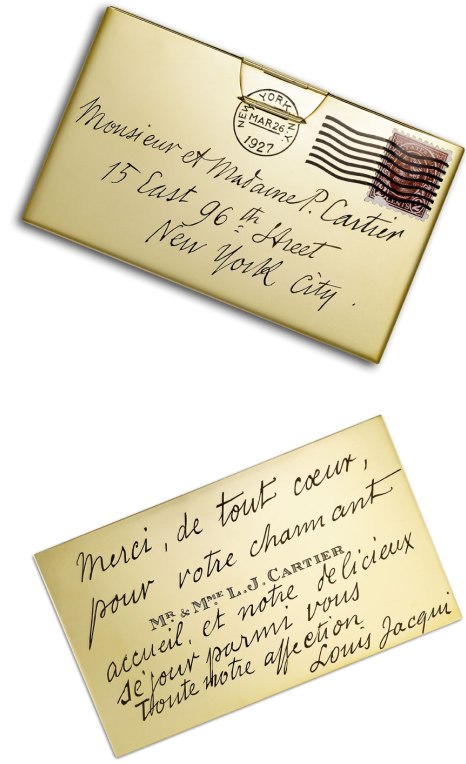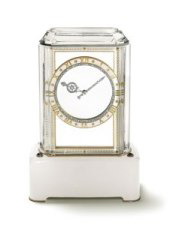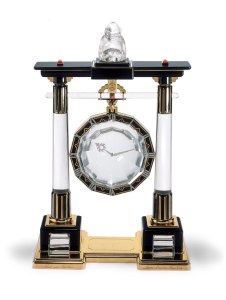The Art of Cartier

Precious Time. Precious Objects

The Maison has offered clocks and watches since 1853. In 1904, Louis Cartier would present the Brazilian aviator Alberto Santos-Dumont with a watch whose dial he could consult while at the commands of his airship. On sale to the public beginning in 1911, the Santos wristwatch was the first timepiece with a case expressly designed to be worn on the wrist [fig. 15]. The three models that followed were greeted with the same instant success: the Tonneau wristwatch in 1906, the Tortue wristwatch in 1912, and the Tank wristwatch in 1919.
 |
fig. 15. Santos wristwatch
- Propiedad
- Cartier Paris, 1915
When in 1900 Louis Cartier visited the Universal Exposition in Paris, he fell under the spell of Fabergé delicate guilloché enamel. Henceforth, Cartier’s stock would include numerous desk clocks in pastel-coloured enamel, together with objects in the Russian style, such as hardstone animals and flowers. Until the late 1930s, ladies’ jewellery wristwatches favoured platinum and diamonds. In the 1940s, Cartier preferred to work with gold. The bracelets were fashioned into chains, bangles or flexible mesh.
Unique and Symbolic objects
Numerous accessories were embellished with a monogram or a coat of arms at the customer’s request. During the 1920s and 1930s, such elitism often resulted in a personal message engraved on an object for the future owner [fig. 16].
 |
fig. 16. Visiting card with envelope
- Propiedad
- Cartier, special order, ca. 1927
Many exceptional pieces were also commissioned from Cartier to coincide with important events in the worlds of art, literature, politics, sport or science. One example conserved in the Cartier Collection is Jean Cocteau’s Academician’s sword.
Mistery Clocks
Mystery clocks resulted from a joint endeavour between Louis Cartier and a gifted clockmaker, Maurice Couët, Cartier’s exclusive supplier of table clocks. He took inspiration from the illusionist and clockmaker Jean-Eugène Robert-Houdin (1805-1871) to create clocks whose hands appear to float inside a transparent dial, seemingly unconnected to the movement, hence their “mystery”. In 1912 he devised the first Mystery clock for Cartier, known simply as Model A similar to the clock in the Collection [fig. 19]. In 1920 Couët perfected the “central axle” model. This system gave Cartier greater freedom to vary the form and decoration of its Mystery clocks. In an unprecedented feat of technique in 1923 the movement was housed inside the top of a Portique clock [fig. 18].
 |
 |
|
fig. 17Model A Mystery watch
|
fig. 18. Large Portique Mystery watch
|


